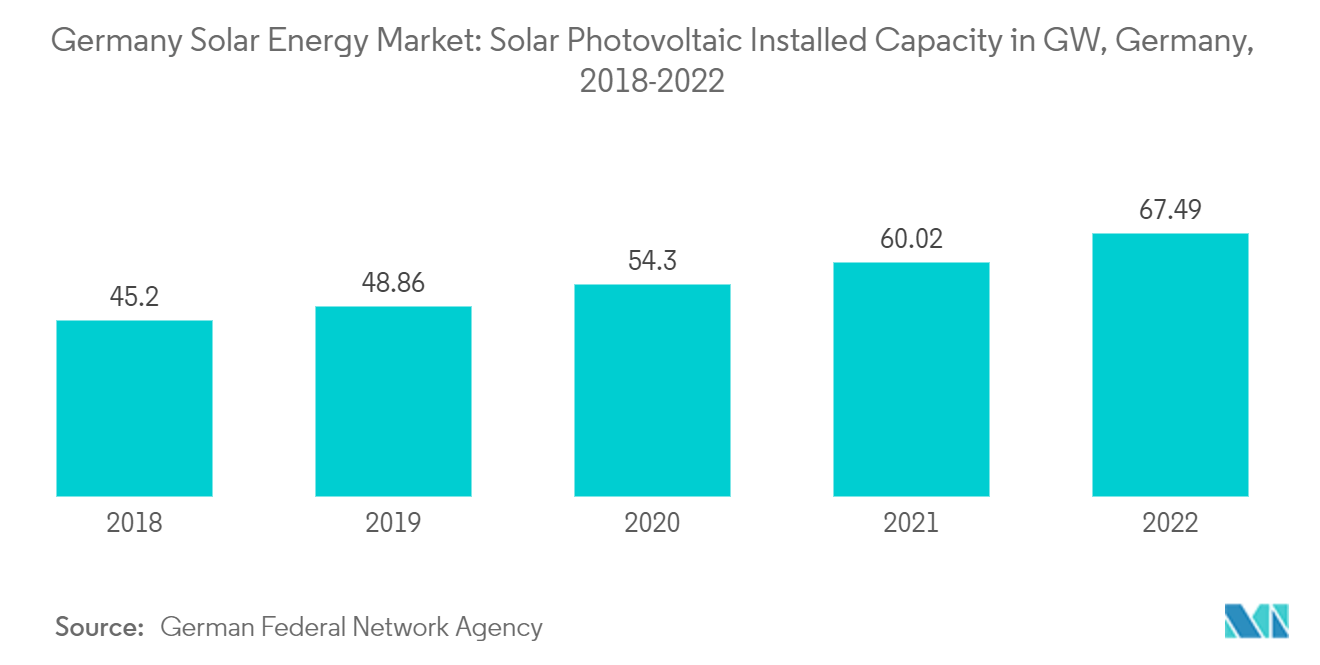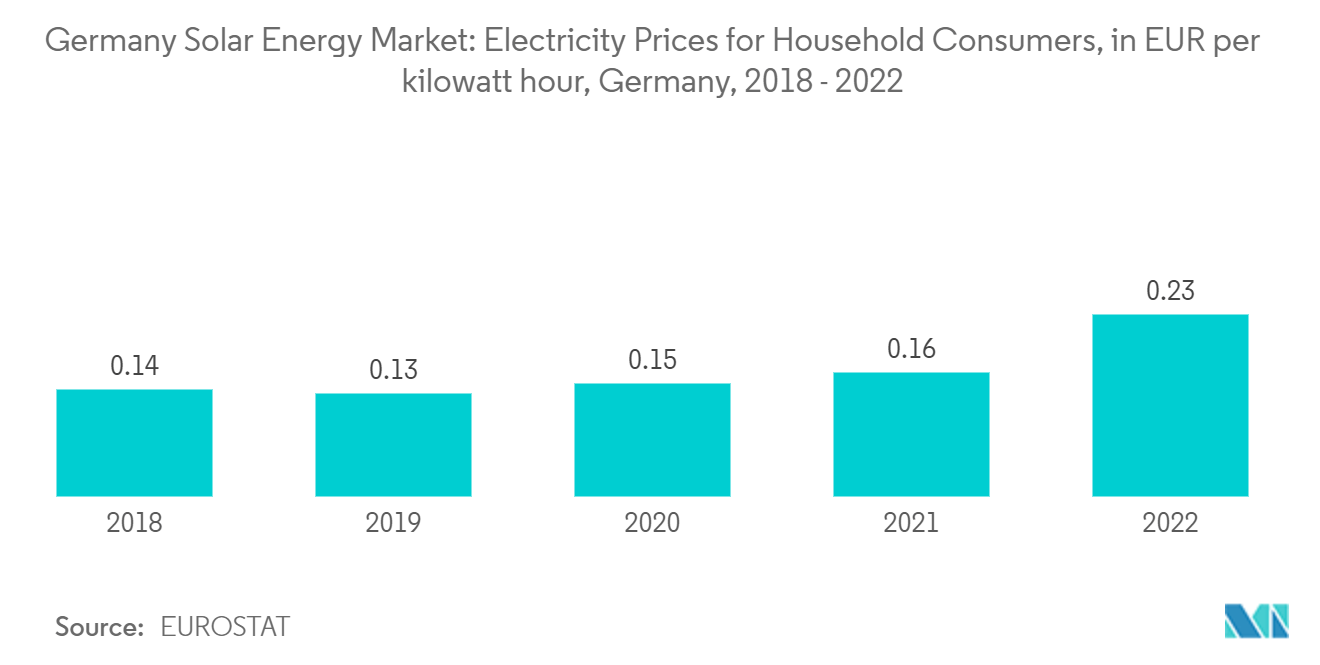Market Trends of Germany Solar Energy Industry
Solar Photovoltaic (PV) Expected to Dominate the Market
- The German solar energy market has undergone significant transformations in recent years. As one of the leading countries in adopting renewable energy, Germany has consistently prioritized the development of its solar sector. This commitment is rooted in the country's ambitious energy transition goals, known as the "Energiewende," which seek to reduce carbon emissions, phase out nuclear power, and shift toward a sustainable energy future.
- The declining costs of solar technology, particularly photovoltaic panels, have played a pivotal role in expanding the market in Germany. As solar panels have become more affordable, the return on investment for solar installations has improved, making them increasingly appealing to consumers and businesses. The steady decrease in solar equipment prices has also led to an increase in the competitiveness of solar power against traditional energy sources.
- Moreover, in July 2023, Emeren Group Ltd, a global solar project developer and operator, announced the successful sale of an 11.5 MWp PV project to the Swiss-based energy company MET Group. The project was sold at the Ready-to-Build ("RTB") stage, and MET Group is expected to complete the construction and operate the power plant. The solar PV power plant will be located in Kentzlin, Germany, in the state of Mecklenburg-Western Pomerania, and commercial operations are expected to start in the second half of 2024.
- According to data from the Federal Statistical Office (Destatis), there has been a 10.1% increase in the number of solar photovoltaic power stations compared to the same month in 2021. Additionally, the installed capacity has shown a Y-o-Y growth of 9.7% between 2021 and 2022. When initial data was collected in January 2018, there were slightly over 1.7 million power stations with a net capacity of 42,300 megawatts. Since then, there has been nearly a 34.0% rise in power stations, and the installed capacity has increased by 38.3%.
- Furthermore, the German solar energy market has exhibited robust international competitiveness. The country is home to several leading solar technology manufacturers and suppliers, making it a key player in the global solar industry. Germany's export of solar products and technology contributes significantly to the country's economic growth and trade surplus.
- In conclusion, Germany's solar PV market is a dynamic and rapidly expanding sector that has witnessed remarkable growth due to supportive government policies, declining technology costs, a commitment to sustainability, innovative financing models, and strong international competitiveness.

Increase in Prices of Electricity Procured from Conventional Mechanisms Expected to Drive the Market
- Germany has vast solar energy potential, and accordingly, renewable energy companies have continued to take leverage to ramp up their share in the renewable energy mix. However, electricity generation from fossil-fuel technologies and various means to sell electricity have substantially increased prices in recent years.
- Hence, the high cost of electricity generation from fossil fuels could likely help Germany in transiting to cheaper renewable energy resources, such as solar energy, and this is anticipated to act as a growth driver for consumers, utilities, commercial, and industrial stakeholders to install solar energy generation infrastructure, thereby increasing the market penetration of solar energy in Germany.
- In Germany, household electricity prices in 2022 increased by almost 60% compared to the previous year. The trend of increases in household electricity prices has persisted since 2018. The non-household electricity prices in 2022 increased by approximately 90% to EUR 0.17 per kWh (or USD 0.19 per kWh). Promoting the utilization of solar energy would prevent customers from paying higher prices procured by conventional means, thereby augmenting the growth of the German solar market.
- Moreover, the Germany Solar Package rolled out by the government aims to install 215 GW of solar by 2030. Adding to this, for residential areas, in June 2022, the Government of Germany increased the feed-in tariff for solar energy power plants up to 750 kW, which also encourages the end-consumers to install solar PV rooftop power plants and earn revenue by injecting electricity into the conventional grid. These government interventions are expected to enhance the solar energy market in the long term.
- In the current market scenario, the high electricity prices have forced high-energy-intensive industries such as steel, cement, food, and beverage to either shut down or curtail the rate of production. This has highlighted the importance of the integration of renewable energy resources such as solar in Germany.
- Hence, such factors are expected to drive the growth of the solar energy market in Germany in a scenario where electricity prices sold by utility or independent power producers are shooting up.

